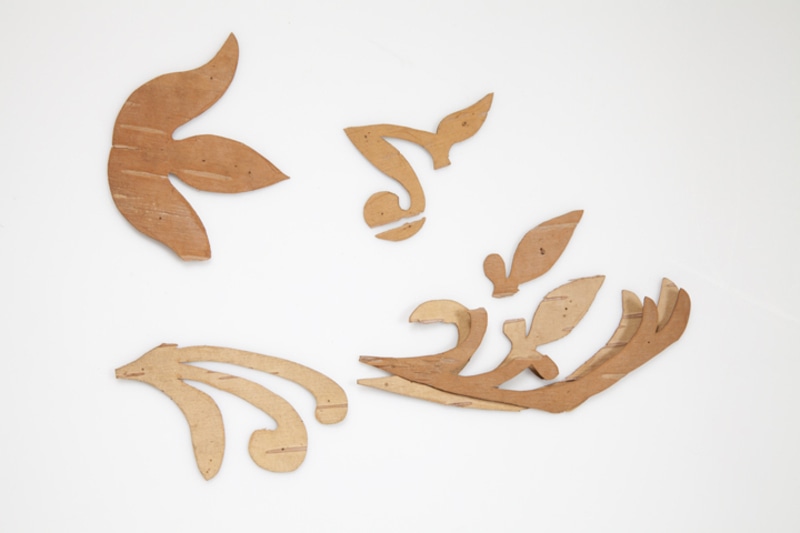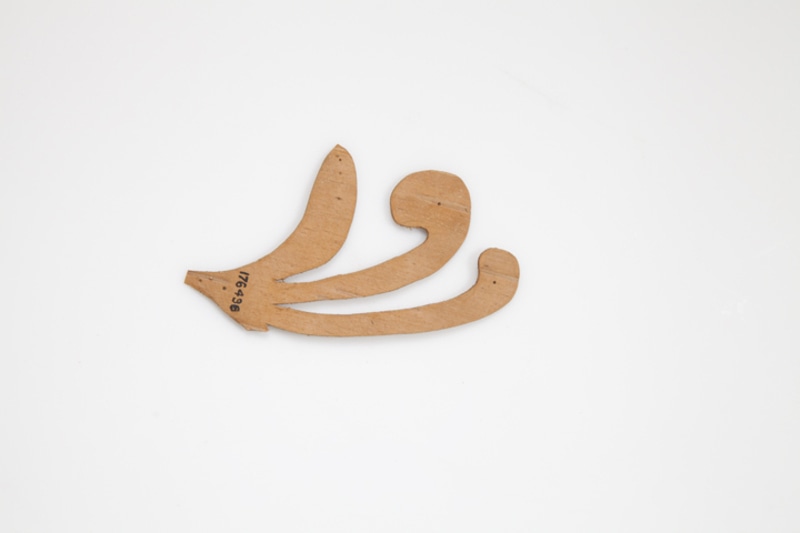stencils Item Number: 1927.1734 . 176436 from the The Field Museum




Citations From Vanstone (1982) Article
« The collection contains a set of four birch bark cut-out patterns of floral motifs (fig. 13) used on one of the illustrated covered baskets (fig. 12). Another set of nine patterns, which includes human forms, a fish, a canoe, and floral stencils, is described by Speck as having been used for bead and silk work (fig. 14). However, one of the patterns, that of a fish, was used on a previously described comb case (fig. 91).
Speck (1935, pp. 190-191) has noted that for the Montagnais, the symbolic pictorial representation of a plant or animal was equivalent to the actual plant or animal and those portrayed were believed to come under the control of the individual human spirit. Dreams played a major part in suggesting the relationship between specific animals or plants and an individual. The spirit was strengthened by having its dream promptings obeyed and success in subsistence activities was thereby assured. »
Vanstone, James W. "The Speck Collection of Montagnais Material Culture from the Lower St. Lawrence Drainage, Quebec." Fieldiana. Anthropology. New Series, No. 5 (October 29, 1982), p.10, fig 14 (p.42).
Translation Of Citations From Vanstone (1982) Article
« La collection contient un ensemble de quatre patrons découpés comportant des motifs floraux (fig. 13) utilisés sur l’un des paniers couverts qui est illustré (fig. 12). Un autre ensemble de neuf patrons, incluant des formes humaines, un poisson, un canot et des pochoirs floraux, est décrit par Speck comme ayant été utilisé pour réaliser du travail avec des perles et de la soie (fig. 14). Cependant, le patron en forme de poisson a été utilisé pour réaliser un étui à peigne décrit plus tôt (fig. 9l).
« Speck (1935, pp. 190-191) a noté que pour les Montagnais, la représentation symbolique picturale d’une plante ou d’un animal était équivalente à la plante ou à l’animal en question et ils croyaient que les sujets de ces représentations se retrouvaient sous le contrôle de l’esprit humain de l’individu. Les rêves jouaient un rôle majeur en suggérant des liens entre une personne et certains animaux ou certaines plantes spécifiques. L’esprit était renforcé lorsque les conseils exprimés par les rêves étaient suivis et le succès des activités de subsistance était alors assuré. »
Vanstone, James W. "The Speck Collection of Montagnais Material Culture from the Lower St. Lawrence Drainage, Quebec." Fieldiana. Anthropology. New Series, No. 5 (October 29, 1982), p.10.
Item History
- Made in Pekuakami, Lac Saint-Jean, Lake St. John, Labrador, Canada
What
- Name
- stencils
- Identification Number
- 1927.1734 . 176436
- Type of Item
- stencil
- Material
- birch bark
Who
- Culture
- Ilnu, Montagnais and Innu
Where
- Holding Institution
- The Field Museum
- Made in
- Pekuakami, Lac Saint-Jean, Lake St. John, Labrador, Canada
Other
- Nom De L'objet
- Pochoir
- Matériaux
- écorce de bouleau
- Ethnic Group
- Montagnais
- Collection
- Lake St. John Objects
- Provenience
- North America, Canada, Quebec, Labrador, Lake St. John